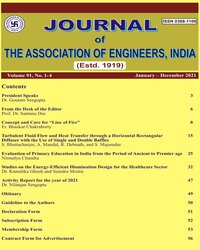Wood Concrete
Subscribe/Renew Journal
On September 30, 1911, three wood concrete beams were tested. The beams were all made on 25th August, 1911, with concrete composed of cement, sand and stone chips in proportion of 1 part granite chip, 1/2 part fine sand, and 1/2 coarse sand 1/2 part cement. The beams were reinforced with timber frame work formed of pitch pine rods and diagonal timber bracing. All three reinforcing frames were soaked in water before they were put in the concrete. The size of the beams was 8" deep, 4" wide and 4'-6" long; the reinforcing frames being embedded in the center of the beam.
User
Subscription
Login to verify subscription
Font Size
Information

Abstract Views: 281

PDF Views: 0



